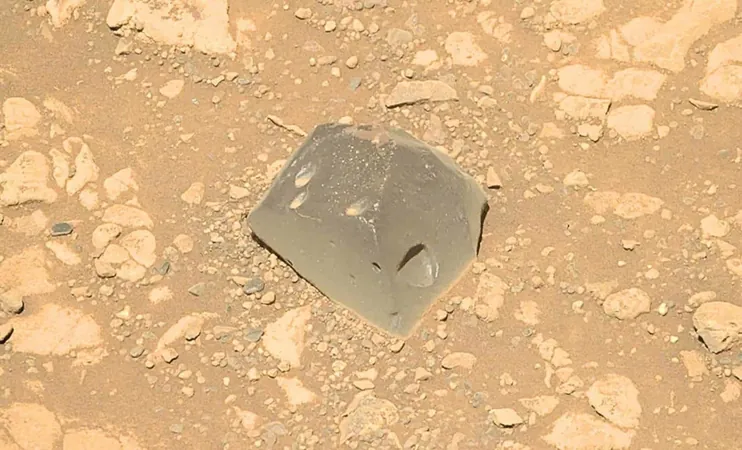
NASA's Perseverance Rover Unveils Mystifying 'Skull Hill' Rock on Mars!
2025-04-24
Author: Sophie
A Stunning Discovery on the Red Planet
NASA's Perseverance rover has struck gold—well, not literally, but it's made an astonishing discovery on Mars that could change our understanding of the planet's geological history forever!
What is 'Skull Hill'? A Geological Enigma!
Perched on the lip of Jezero Crater, this peculiar rock, aptly dubbed "Skull Hill," captures attention with its dark, angular surface and unique pockmarked appearance. The excitement builds as the rover journeys down the lower slopes of nearby "Witch Hazel Hill," posing tantalizing questions about the rock's origins.
At the Convergence of Two Worlds
Skull Hill was uncovered at a fascinating junction known as "Port Anson," where two striking bands of light and dark-toned rocks intersect. These distinct regions, highlighted in satellite images, are prime suspects in revealing the secrets of Mars' geological processes.
Could It Have Landed from Another World?
Geologists label the mysterious Skull Hill as a "float rock," suggesting it may have originated from another location before arriving at its current spot. This idea adds another layer of intrigue to an already spellbinding find.
What’s So Unique About Skull Hill?
The standout feature of Skull Hill is undoubtedly its striking dark hue, which sharply contrasts with the lighter rocks around it. Its surface is riddled with noticeable pits—possible byproducts of erosion or wind—making it a geological treasure trove.
Unraveling the 'Spherules' Mystery
Even more captivating are the tiny spherical formations found embedded in the surrounding regolith, known as "spherules." These tiny structures could hold essential clues about Mars' past, potentially indicating conditions that once supported life.
Is Skull Hill a Meteorite?
Initially, some scientists speculated that Skull Hill might be a meteorite, given its resemblance to dark, metallic fragments discovered by the Curiosity rover. However, early chemical analyses suggest otherwise, indicating the rock doesn't align with the typical meteorite profile found on Mars.
Could It Be an Igneous Rock?
As the investigation deepens, the idea that Skull Hill could be an igneous rock—formed from cooling lava or magma—is gaining traction. Such rocks often contain mineral-rich compositions, including olivine and pyroxene, contributing to its enigmatic darkness.
Was It Ejected by a Catastrophic Impact?
Another theory suggests that Skull Hill might have been blasted from an impact crater during a cataclysmic event in Mars' turbulent past. This would explain its presence far from its potential origin, having been hurled across the surface in a debris field.
The Quest for Answers Continues
As the Perseverance rover continues its mission, it’s equipped with cutting-edge tools that will further analyze Skull Hill's chemical makeup, offering scientists essential data to decode this geological enigma. What secrets might it reveal about Mars—were there conditions that once allowed life to thrive?
Stay tuned for more thrilling discoveries from the Red Planet and subscribe for exclusive content and the latest updates on space exploration!









 Brasil (PT)
Brasil (PT)
 Canada (EN)
Canada (EN)
 Chile (ES)
Chile (ES)
 Česko (CS)
Česko (CS)
 대한민국 (KO)
대한민국 (KO)
 España (ES)
España (ES)
 France (FR)
France (FR)
 Hong Kong (EN)
Hong Kong (EN)
 Italia (IT)
Italia (IT)
 日本 (JA)
日本 (JA)
 Magyarország (HU)
Magyarország (HU)
 Norge (NO)
Norge (NO)
 Polska (PL)
Polska (PL)
 Schweiz (DE)
Schweiz (DE)
 Singapore (EN)
Singapore (EN)
 Sverige (SV)
Sverige (SV)
 Suomi (FI)
Suomi (FI)
 Türkiye (TR)
Türkiye (TR)
 الإمارات العربية المتحدة (AR)
الإمارات العربية المتحدة (AR)